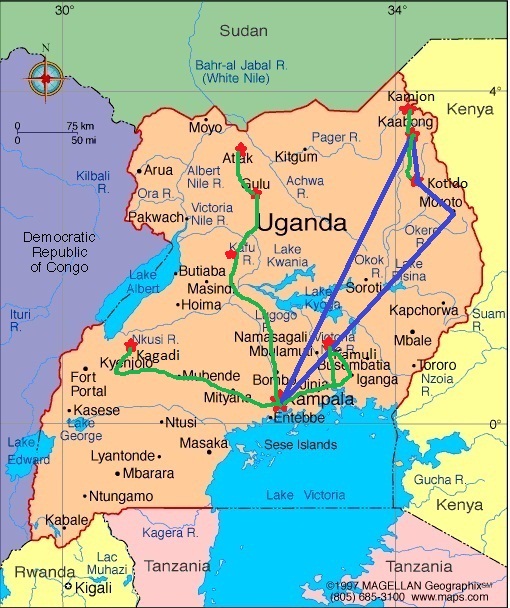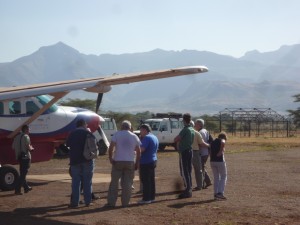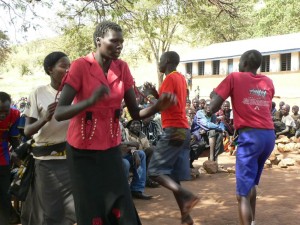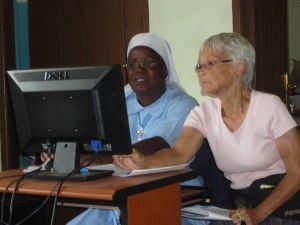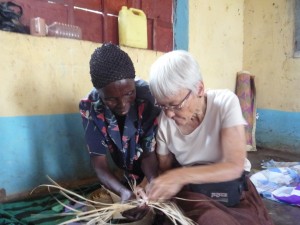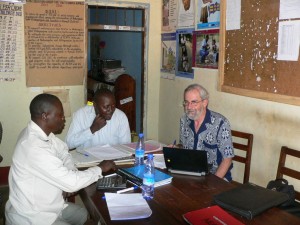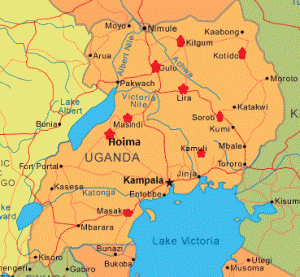We have visited Namugongo several times but have not written about it yet. The story of Namugongo is the story of the Uganda Martyrs, who in 1886 only a few years into their new-found religion, chose to burn on the pyre rather than follow the King of Buganda’s traditional/”pagan” ways. It is perhaps East Africa’s most important place of Christian pilgrimage. I will try to briefly relate the story.
Christianity was brought to Uganda by missionaries from the Church Missionary Society and by the Catholic White Fathers in 1877 and 1878. They were first welcomed by the Buganda Kabaka Muteesa I, who liked the new faith because it didn’t require him to spill blood in circumcision as Islam. This caused discontent between the new Christians and the Muslims and the traditionalists. Soon Kabaka Muteesa ordered the killing of 72 Muslims for refusing to eat meat of an animal not slaughtered by a Muslim. They were executed at Namugongo. (There is a mosque near Namugongo in memory of these Muslims. We have not yet visited.)
Muteesa I died and his young son, Kabaka Mwanga who also had sympathy for the Christians took the throne. There were tensions in the Buganda kingdom between the Christians and the traditionalists. Mwanga practiced both faiths. One of the first converts to Christianity was Balikuddembe the person in charge of the king’s private quarters. Many other converts were royal servants and pages in the king’s court. When the Kabaka called for the pages and Balikuddembe suspected the Kabaka wanted them to participate in pagan activities, he would report to the Kabaka that they were absent. The Kabaka was not happy and ordered Balikuddembe killed. Mwanga called the pages together and ordered the non-Christians to move to his side. Only one person did. Mwanga threatened to arrest Christians but didn’t but he continued in a foul mood.
The Kabaka’s wrath peaked on May 25, 1886 He had gone on a hippo-hunting expedition which proved unfruitful. He returned early to his residence only to find that there were no pages to serve him as they had all gone for religious study. When they returned he began questioning them and started to kill them. He rampaged through his palace and butchered several Christian pages that he found. In the morning he ordered all the Christians to line up and ordered his executioners to tie them up. By evening they began their march toward Namugongo. Several pages were killed along the route, trying to convince the Christians to give up their faith. At Namugongo the men were wrapped in reeds, placed in a circle with their feet touching and a fire was lit at the center. Thirty-one martyrs died that day. During the two years (1885-1887) of persecution more Christians were killed—23 Protestants and 22 Catholics. The executioner later became a Christian.
On October 18, 1964, Pope Paul VI proclaimed the 22 martyrs saints. He also paid tribute to the Protestant martyrs. One of the survivors donated land for the Catholic Shrine, which is built in the shape of a traditional Baganda hut. Inside the shrine are 22 stained glass-pictures with the names of the martyrs and under the altar is the spot marked with a concrete star where the then leader of the Catholic church in Buganda was burnt over a slow fire on the morning of June 3, 1886. Pope Paul VI consecrated the shrine in 1969. (We were living in Kenya at the time and remember the Pope’s visit to Uganda.)
Below the shrine in a valley is a man-made lake with pavilions on both sides and a platform in the middle where mass is celebrated. Trees surround the area giving it a serene atmosphere.
The Protestant shrine is about 500 meters from the Catholic shrine. It is not as impressive but also has history connected to it. The remains of the martyrs that perished in the main pyre were collected and buried here. Later an altar and a church were built on top of the grave. The tree where people were tied and tortured before being executed is also here.
June 3 is a Ugandan public holiday. Every year thousands of pilgrims from all over East Africa – some walking hundreds of kilometers – converge to pay homage to the Uganda Martyrs. The grounds are also used at other times for large religious gatherings by different Christian groups.































































































